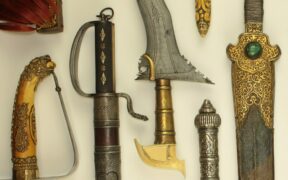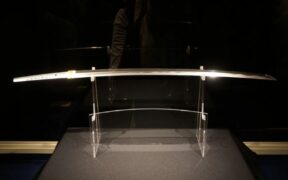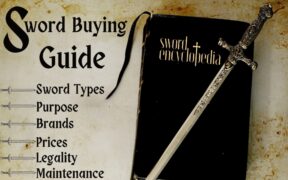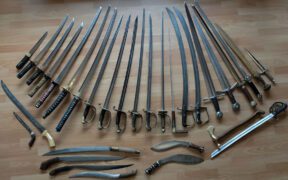Our content features commercial links to our products, committed to transparent, unbiased, and informed editorial recommendations. Learn More
Dao Swords: A Guide for Sword Collectors
NO AI USED This Article has been written and edited by our team with no help of the AI
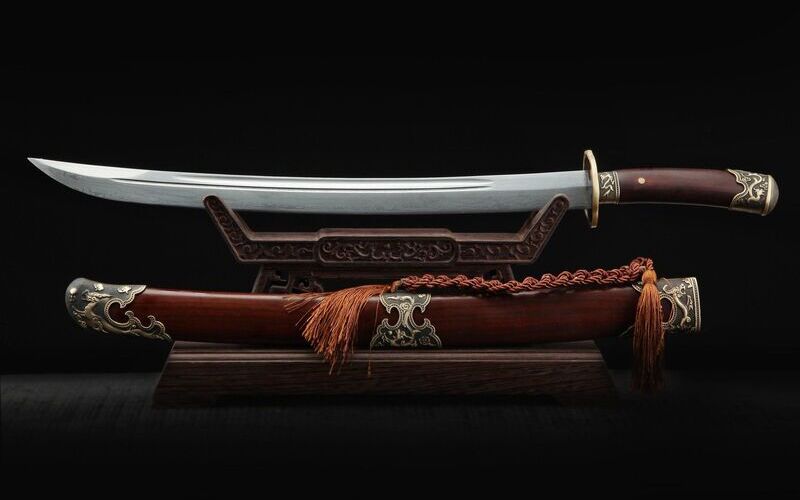
The Chinese single-edged
We’ve compiled a guide on the different types of dao,
Types of Chinese Dao Sword
The traditional dao
Nowadays, any single-edged Chinese
1. Duan Dao (Short Saber)
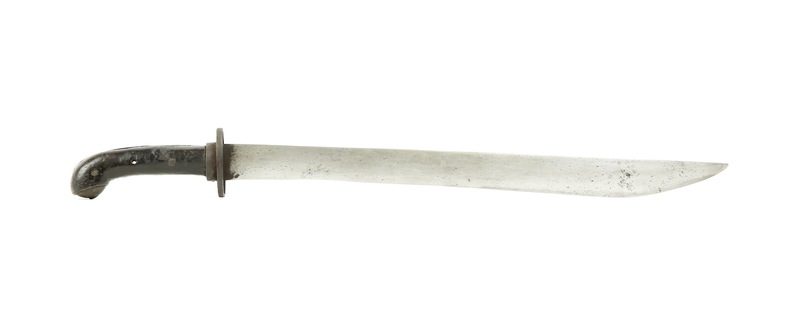
The Chinese used a variety of dao for different purposes. Since the duan dao is a short, compact, fast, and powerful saber, its owners usually hide it in the waist or a boot. Its overall length is around 60 centimeters, with its blade about 50 centimeters long.
First appearing in the Ming dynasty, it remained in frequent military use till the late Qing Dynasty. By the 19th century, these short sabers became a part of daily attire. Some served as tourist souvenirs, but others were well made and had properly-hardened edges.
2. Chang Dao (Long Saber)
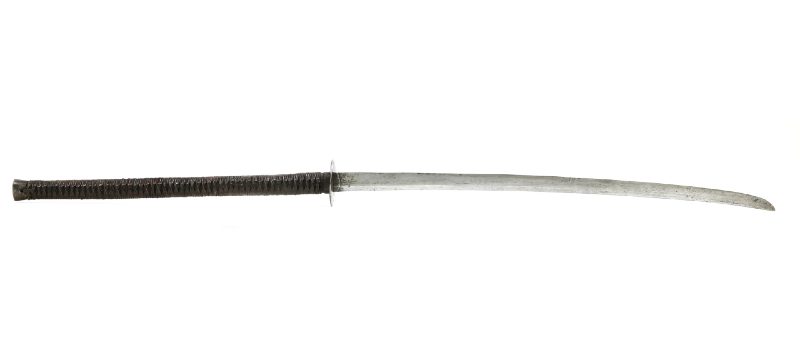
The Chinese long dao is called chang dao, usually with an overall length ranging from 120 to 180 centimeters and a blade length of more than 80 centimeters. It is similar to the Japanese
Nowadays, these long sabers are extremely rare on the market due to the large-scale destruction of antique swords in the 20th century. Unlike short swords, chang dao sabers were more challenging to hide.
3. Yaodao or Peidao (Waist Saber)
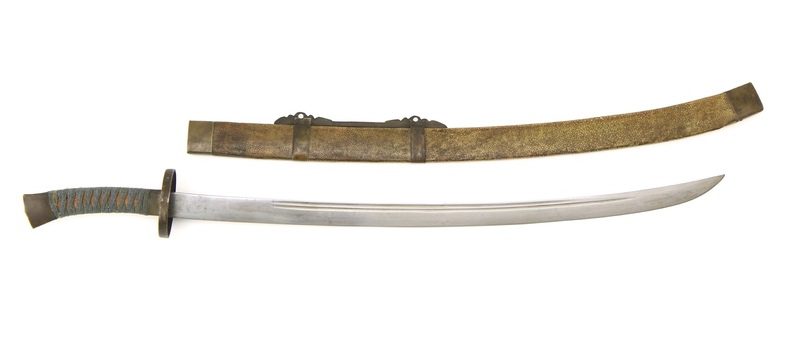
Chinese warriors wielded these swords in one hand and wore them slung on their waist. The term yaodao is more used today, as peidao was an old-fashioned term in the 18th century. However, its name has nothing to do with its blade shape, which can be straight or slightly curved. It was widely popular in the Qing dynasty, often as part of military attire. Its overall length can be around 80 centimeters, with a blade length of more than 65 centimeters long.
4. Miao Dao (Large Two-Handed Saber)
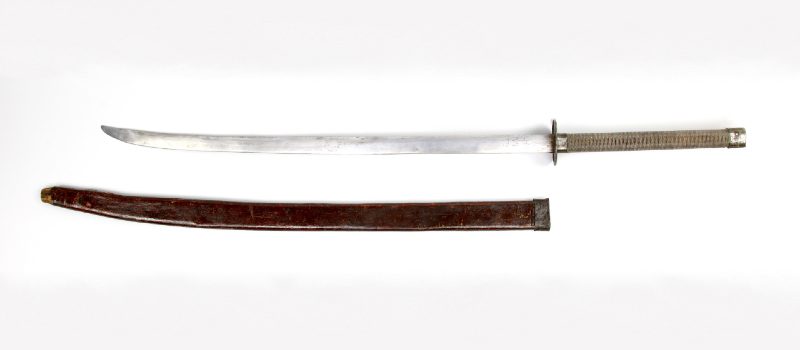
The term miao dao translates as sprout saber, so it originally referred to a narrow, slightly curved blade similar to a rice sprout. Its name had nothing to do with whether the dao is a single-handed or two-handed saber. Generally, its overall length is more than 110 centimeters and its blade length is around 80 centimeters long. However, the miao dao is now more associated with a large, two-handed saber, particularly the long dao of Chinese martial arts.
5. Dadao (Cleaver-Shaped Sword )
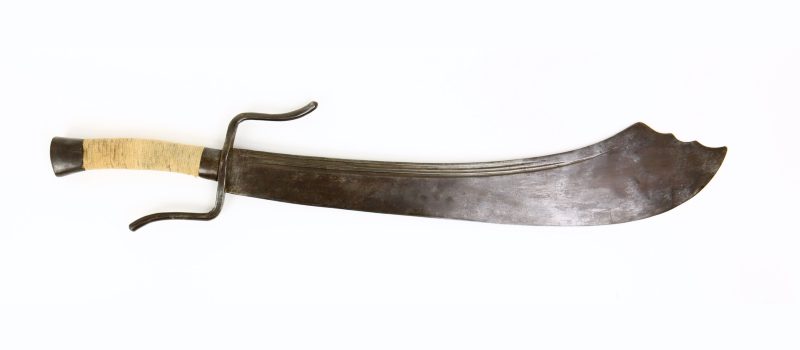
The term dadao translates as big knife or great saber. It has a broad blade that flares out toward a clipped tip. Its overall length can be more than 90 centimeters, and its blade length is around 60 centimeters long. Often heavy and impractical, Chinese forces used them in the 1930s to inspire fear in their enemies during battle. Hence, it also became the symbol of the Chinese post-imperial resistance fighters and is sought-after by collectors.
Different Types of Dao Blades
Most of the time,
1. Zhibeidao (Straight-Back Saber)
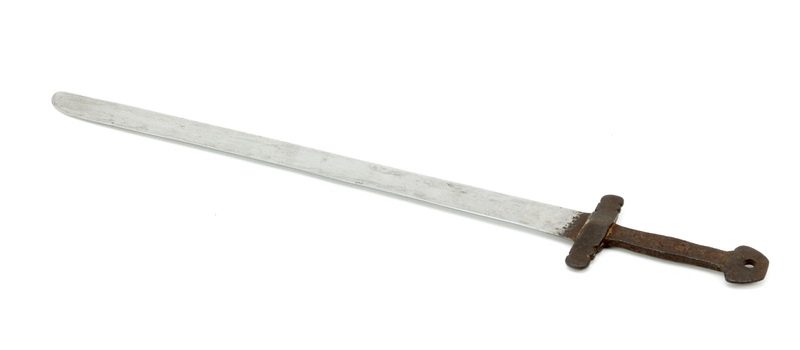
Unlike the traditional dao with a slightly curved blade, the zhibeidao has a straight back. It is sometimes called a zhidao, which means straight dao. During the Ming-Qing transition period, the Chinese militia used straight swords, especially the double-edged jian, but also used a single-edged
2. Yanmaodao (Goose-Quill Saber)
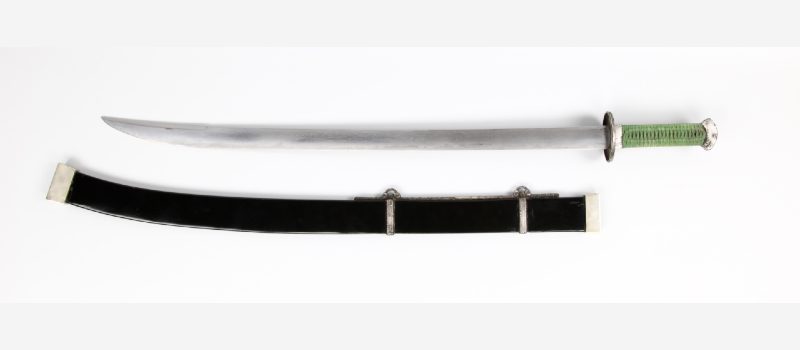
The yanmaodao has a near-straight blade that sweeps up gently. Think of it as a transitional phase between the straight dao and curved sabers. In literature, its historical name is yanlingdao, which translates as a goose-feather saber.
The Chinese cavalry used its point for thrusting and its single edge for slashing. It is rare in the market today, though some examples have an overall length of more than 80 centimeters and a blade length of fewer than 70 centimeters long.
3. Liuyedao (Willow-Leaf Saber)
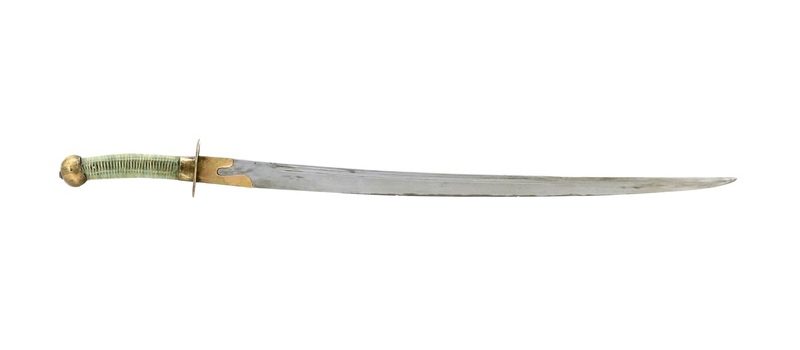
Most common dao during the Ming and Qing dynasties, liuyedao has a long, moderate curve. Its shape is not native to China, so it likely became popular during the Mongol conquest. The deeper curve makes it more efficient for slashing.
The liuyedao comes in varying designs, such as narrow and wide blades. In some cases, it has a sharpened back edge near the tip for thrusting. Most examples have an overall length of around 90 centimeters.
4. Yanchidao (Goose-Wing Saber)
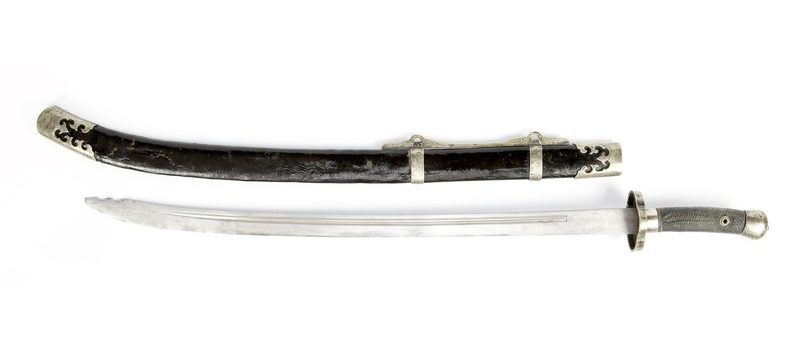
A variety of liuyedao, the yanchidao has a clipped tip, which can be straight, hollow, or decorative. Some scalloped edges resemble the ends of feathers on a bird’s wing, hence the name. It is also called fengchidao, which means phoenix wing saber.
Originating in the Song dynasty, the yanchidao is an old and rare type of blade. Most remaining examples can be traced back to the Ming and Qing dynasties. Some have an overall length of more than 80 centimeters and a blade length of more than 65 centimeters.
5. Niuweidao (Oxtail Saber)
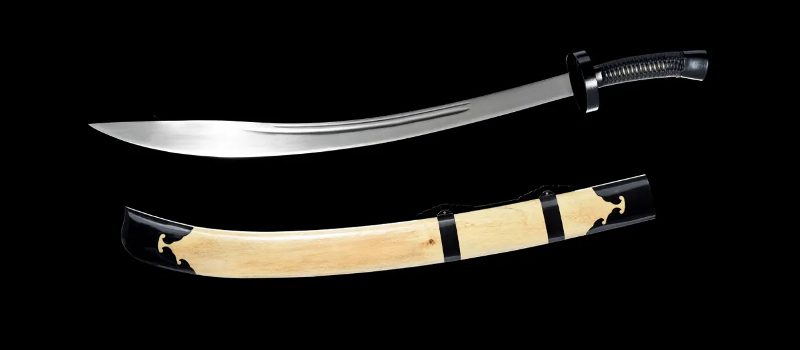
A non-military Chinese broadsword, the niuweidao originated in the 19th century, primarily for civilian and martial arts use. The niuweidao has a deep, curved blade with a wider sweeping tip and became the typical dao design. This
The Chinese Saber in Use Today
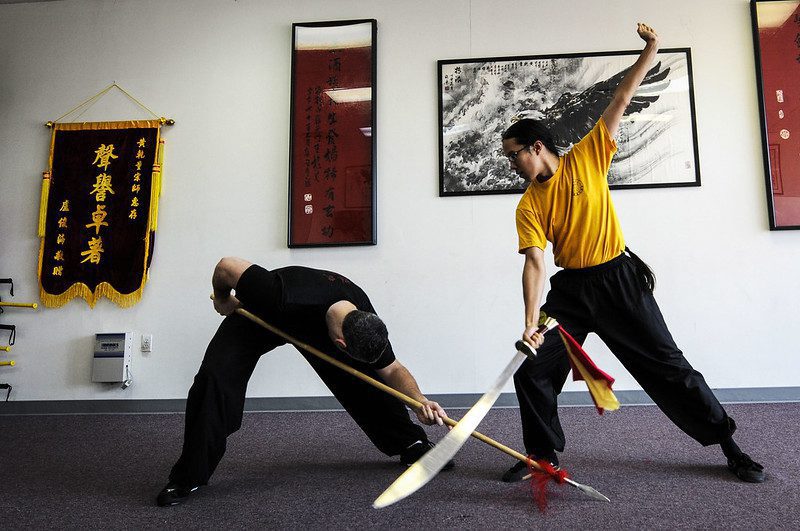
China is widely regarded as the home of martial arts, tracing their origins from ancient military skills and other fighting techniques. Nowadays, the dao usually refers to the Chinese broadsword used in martial arts. However, in Chinese weapons in general, the term dao can also refer to anything edged, including polearms. For instance, the guan dao, also known as yan yue dao, is a halberd with a long crescent-shaped blade for slashing.
Before moving into jian or double-edged
In wushu or kung fu, practitioners use a wooden dao, especially for partner matching drills, before progressing to a saber with a steel blade. Many of the remaining Chinese dao swords today have historical value. For instance, the dadao has a connection to Japanese-Chinese conflicts and is sought after by collectors.
Characteristics of the Dao Sword
There are different types of dao, but they all have similar structural characteristics. However, the blade length and shape vary depending on the Chinese martial art training and practitioner.
Blade Construction
The Chinese dao features a high carbon steel blade, just like the Japanese samurai
The dao has a single-edged blade, and the back of the blade is unsharpened, sometimes flat, notched, or beveled. Chinese warriors used this part for defense and blocking. The blade’s tip is very sharp and comes in varying shapes, such as rounded, oblique, and beveled. Many Chinese sabers also feature grooves to make them lighter while strengthening the large blade.
Length
The blade length usually depends on the style of practice. For traditional Yang style tai chi, dao usually ranges from 76 to 80 centimeters. Most broadswords used today commonly have more than 4 centimeters wide blades.
Weight and Balance
The Chinese saber must be well-built and has a good balance. Even if it uses more muscular power, the blade must be easy to wield but strong enough to support its weight. In martial arts, it aids the practitioner in several movements while building the muscles needed for training.
Hilt (daoba)
Covered by the hilt, the tang is the unsharpened part of the blade. Generally, battle-ready swords come in full tang blades, and the tang usually has the same width as the blade. However, some dao have wide blades, so they commonly have a narrower tang.
The handguard of the dao is called a hushou, which protects the hand during a fight. Eventually, Chinese handguard designs influenced the Japanese-made tsuba. Unlike the Japanese katana, the Chinese dao features a pommel as a counterweight to the steel blade.
Sword Mountings
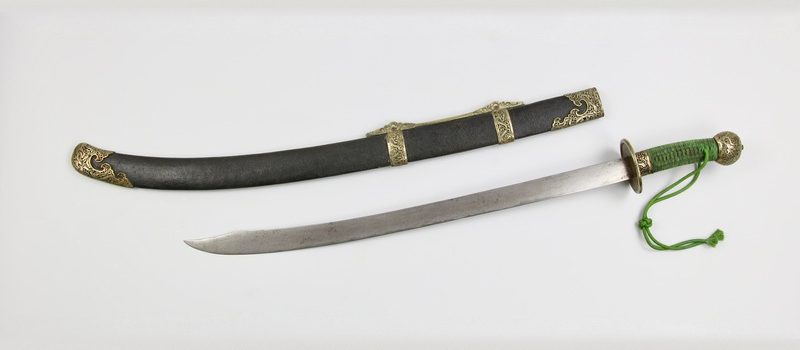
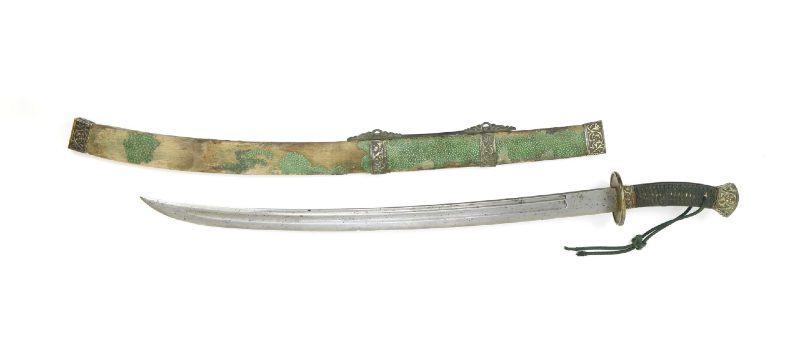
During the Qing dynasty, the two types of saber mounts were the fangshi and the yuanshi. The fangshi is simply an angular style, featuring a wedge-shaped pommel and squared scabbard end. On the other hand, the yuanshi is a rounded style, often with a ball-shaped pommel and rounded scabbard end. These scabbards often have a rayskin surface, sometimes polished or lacquered.
History of the Chinese Dao Sword
The two classic types of Chinese swords are the straight, double-edged jian and the single-edged dao. The Chinese armies used both blades but later preferred the curved dao for its practicality in warfare. The earliest dao was bronze-made, but steel-made dao became a mainstay through the Ming and Qing dynasties.
In Han Dynasty
At the time of the founding of the Han dynasty in 206 BCE, Chinese armies used the double-edged jian in warfare. By the end of the period, the single-edged dao replaced the jian as the preferred weapon of the cavalry. However, the dao of this period had straight blades called zhibeidao.
In Tang Dynasty
From 618 to 907 CE, the dao remained the
Chinese warriors also used waist-worn peidao and the long dao called chang dao in large army formations. The latter had a long handle that would have made it a devastating weapon at close range. However, it seems to have disappeared from combat use afterward.
In Song and Yuan Dynasties
The Mongols conquered the Song dynasty and had used long, heavy blades with a slight curvature, which influenced the Chinese swords. Mongolian sabers were easier to use on horseback and more efficient for slashing than thrusting.
The Mongols also brought the saber to other cultures that had used straight-bladed swords. Even if they had taken control of China and established the Yuan dynasty, they also attempted to conquer Japan, which led to changes in the manufacture and design of Japanese swords.
In Ming Dynasty
From 1368 to 1664, the Chinese adopted many Mongol traditions, including the
The late Ming also saw the revival of the long sabers when China faced frequent raids by the Japanese pirates called wokou. Some raiders included the ronin, or masterless samurai, who used their odachi, an extremely long
In Qing Dynasty
From 1644 to 1912, the Qing military had a standard regulation on dao swords regarding the size, materials, and mounting. Still, the Chinese had freedom in their blade choices, which resulted in several blade types.
While the military resorted to the Chinese saber, non-military people mostly carried a short or long version of the jian. After the fall of the Qing dynasty, the Chinese armies switched to European-style sabres.
Conclusion
Throughout history, the dao evolved into different types of single-edged Chinese swords. The waist-worn saber, miao dao, and cleaver-shaped dadao remain popular today. Some serve as functional training weapons in Chinese martial arts while others have historical value and are a must-have for any collection.
